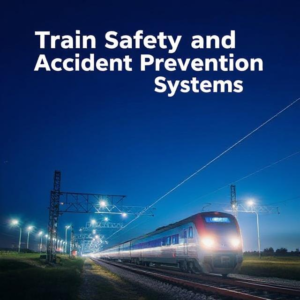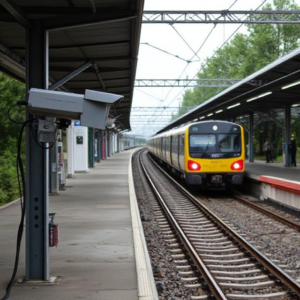Tracking and preventing rail theft and vandalism is important because it helps keep trains, goods, and the railway system safe and running smoothly. Here’s a breakdown of how it’s done:
1. Technology-Driven Solutions to Prevent Rail-Related Theft and Vandalism:
There are a variety of technological tools that are used to prevent theft and vandalism on railways, making it easier to spot and stop criminals:
- CCTV Surveillance: Cameras are set up along train tracks, stations, and other parts of the railway system. These cameras record and help authorities monitor what’s happening in real-time. If someone tries to tamper with a train or steal something, the cameras can capture the crime, making it easier to identify criminals.
- Motion Sensors: These sensors are placed on the tracks, along with other critical locations. They can detect any movement, especially when there’s an intruder or an object moving around that shouldn’t be. If motion is detected in an area where it shouldn’t be, an alert can be sent to authorities right away.
- Automated Tracking of Goods and Trains: This technology uses GPS and other tracking systems to monitor the movement of trains and goods. This way, authorities can know exactly where everything is at all times. If a train or goods go off track, it can be identified, and the problem can be fixed quickly.

2. Implementation of CCTV Surveillance, Motion Sensors, and Automated Tracking of Goods and Trains:
- CCTV Surveillance: Cameras are installed on trains and in key areas along the railway network, like stations, yards, and even remote areas. They help capture any suspicious activity. These cameras can be connected to a central control room where security teams can monitor the footage in real-time.
- Motion Sensors: These sensors are placed at strategic points such as near cargo containers, railway crossings, and the tracks themselves. If someone is near these areas or tries to break in, the sensors will detect movement and immediately notify security.
- Automated Tracking: Every train and shipment can be tagged with GPS systems, making it possible to track the train’s exact location on the railway network. This helps identify any delays, derailments, or unauthorized movements that could signal theft or tampering.
3. Legal and Societal Measures to Reduce Theft of Goods and Infrastructure:
In addition to technology, there are laws and social strategies to stop rail theft and vandalism:
- Legal Measures: Many countries have strict laws that make stealing or vandalizing railway property a serious crime. Those caught stealing goods or damaging infrastructure can face heavy fines or prison time. Laws also include harsher penalties for repeat offenders. These laws act as a deterrent.
- Social Awareness Campaigns: These campaigns aim to educate people about the consequences of rail theft and vandalism. It encourages the public to report suspicious activity and avoid engaging in criminal acts. Schools, community centers, and media outlets often promote safety and awareness programs.
- Collaboration with Local Authorities: Railway companies often work closely with police and local communities to prevent and solve theft and vandalism cases. They may share information about incidents, set up joint patrols, or improve security at high-risk areas.
Together, these technological, legal, and societal measures make it much harder for people to steal from or damage the railway system. The goal is to keep everything safe, secure, and running smoothly so that the rail system can continue to operate without interruption.
Keywords: Indian Railway, Railway











